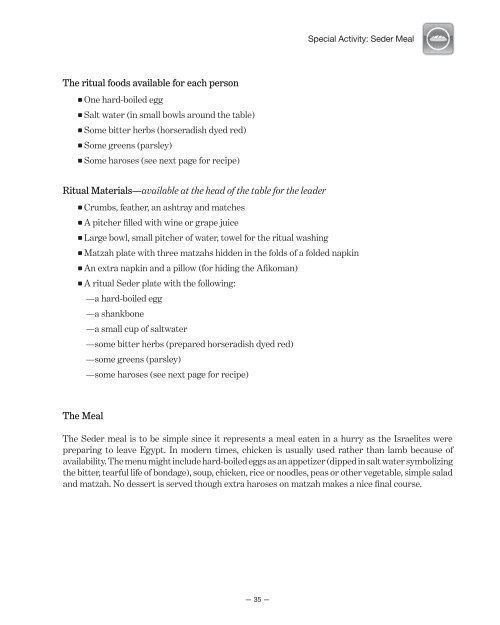2011 Lent Study Guide - University Presbyterian Church
2011 Lent Study Guide - University Presbyterian Church
2011 Lent Study Guide - University Presbyterian Church
Create successful ePaper yourself
Turn your PDF publications into a flip-book with our unique Google optimized e-Paper software.
The ritual foods available for each person<br />
One hard-boiled egg<br />
Salt water (in small bowls around the table)<br />
Some bitter herbs (horseradish dyed red)<br />
Some greens (parsley)<br />
Some haroses (see next page for recipe)<br />
Ritual Materials—available at the head of the table for the leader<br />
The Meal<br />
Crumbs, feather, an ashtray and matches<br />
A pitcher filled with wine or grape juice<br />
Large bowl, small pitcher of water, towel for the ritual washing<br />
Matzah plate with three matzahs hidden in the folds of a folded napkin<br />
An extra napkin and a pillow (for hiding the Afikoman)<br />
A ritual Seder plate with the following:<br />
—a hard-boiled egg<br />
—a shankbone<br />
—a small cup of saltwater<br />
—some bitter herbs (prepared horseradish dyed red)<br />
—some greens (parsley)<br />
—some haroses (see next page for recipe)<br />
The Seder meal is to be simple since it represents a meal eaten in a hurry as the Israelites were<br />
preparing to leave Egypt. In modern times, chicken is usually used rather than lamb because of<br />
availability. The menu might include hard-boiled eggs as an appetizer (dipped in salt water symbolizing<br />
the bitter, tearful life of bondage), soup, chicken, rice or noodles, peas or other vegetable, simple salad<br />
and matzah. No dessert is served though extra haroses on matzah makes a nice final course.<br />
— 35 —<br />
Special Activity: Seder Meal


